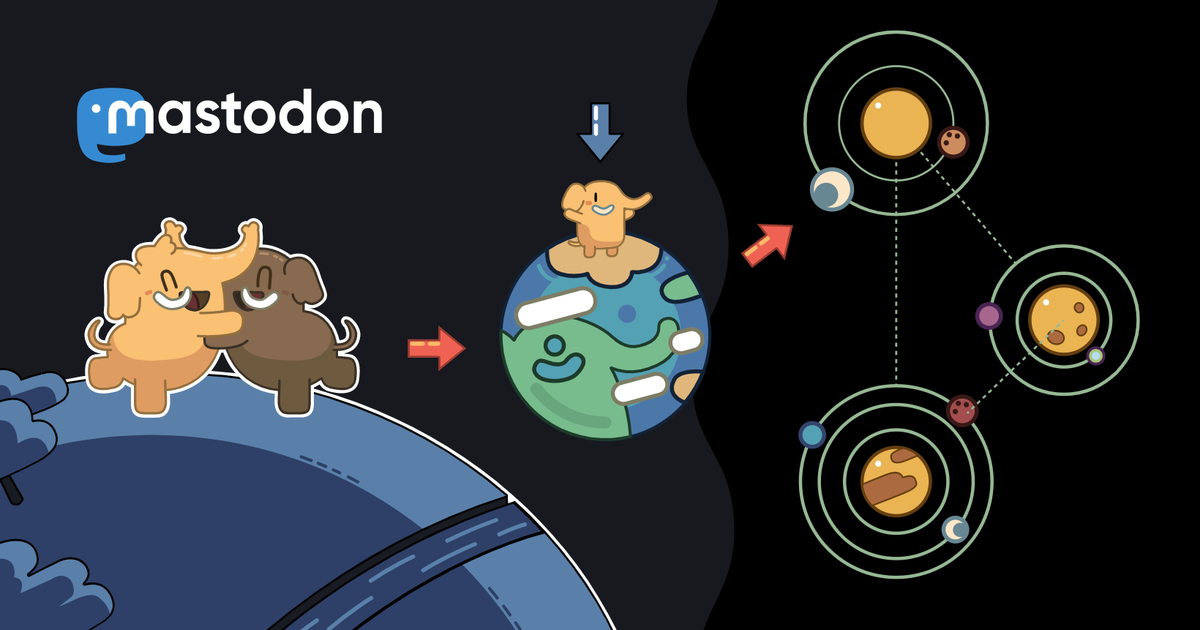grateful wolf<p>horseshoe crab? (not a crab) <a href="https://archaeo.social/tags/arthropods" class="mention hashtag" rel="nofollow noopener" target="_blank">#<span>arthropods</span></a> <a href="https://archaeo.social/tags/BlueBloods" class="mention hashtag" rel="nofollow noopener" target="_blank">#<span>BlueBloods</span></a> <a href="https://archaeo.social/tags/LivingFossils" class="mention hashtag" rel="nofollow noopener" target="_blank">#<span>LivingFossils</span></a> <a href="https://en.wikipedia.org/wiki/Horseshoe_crab" rel="nofollow noopener" translate="no" target="_blank"><span class="invisible">https://</span><span class="ellipsis">en.wikipedia.org/wiki/Horsesho</span><span class="invisible">e_crab</span></a><br><a href="https://ecoevo.social/@sarae/113997821697738642" rel="nofollow noopener" translate="no" target="_blank"><span class="invisible">https://</span><span class="ellipsis">ecoevo.social/@sarae/113997821</span><span class="invisible">697738642</span></a></p>
mstdn.social is one of the many independent Mastodon servers you can use to participate in the fediverse.

A general-purpose Mastodon server with a 500 character limit. All languages are welcome.
Administered by:
Server stats:
8.3Kactive users
mstdn.social: About · Status · Profiles directory · Privacy policy · Terms of service
Mastodon: About · Get the app · Keyboard shortcuts · View source code · v4.4.1
#livingfossils
0 posts · 0 participants · 0 posts today
ReallyCanadianFly<p>Everything evolves, even if it's not obvious in morphology.</p><p><a href="https://mstdn.ca/tags/evolution" class="mention hashtag" rel="nofollow noopener" target="_blank">#<span>evolution</span></a> <a href="https://mstdn.ca/tags/livingfossils" class="mention hashtag" rel="nofollow noopener" target="_blank">#<span>livingfossils</span></a> <a href="https://mstdn.ca/tags/adaptation" class="mention hashtag" rel="nofollow noopener" target="_blank">#<span>adaptation</span></a> <a href="https://mstdn.ca/tags/morphology" class="mention hashtag" rel="nofollow noopener" target="_blank">#<span>morphology</span></a> <a href="https://mstdn.ca/tags/genetics" class="mention hashtag" rel="nofollow noopener" target="_blank">#<span>genetics</span></a> <a href="https://mstdn.ca/tags/immunesystems" class="mention hashtag" rel="nofollow noopener" target="_blank">#<span>immunesystems</span></a> <a href="https://mstdn.ca/tags/evolutionaryhistory" class="mention hashtag" rel="nofollow noopener" target="_blank">#<span>evolutionaryhistory</span></a> <a href="https://mstdn.ca/tags/evolutionarybiology" class="mention hashtag" rel="nofollow noopener" target="_blank">#<span>evolutionarybiology</span></a> </p><p>Living Fossils Revealed: The Hidden Evolution of These 4 Ancient Species | Discover Magazine <a href="https://www.discovermagazine.com/planet-earth/living-fossils-revealed-the-hidden-evolution-of-these-4-ancient-species?utm_source=pocket-newtab-en-us" rel="nofollow noopener" translate="no" target="_blank"><span class="invisible">https://www.</span><span class="ellipsis">discovermagazine.com/planet-ea</span><span class="invisible">rth/living-fossils-revealed-the-hidden-evolution-of-these-4-ancient-species?utm_source=pocket-newtab-en-us</span></a></p>
Matt Willemsen<p>Living fossils: 12 creatures that look the same now as they did millions of years ago <br><a href="https://www.livescience.com/animals/living-fossils-creatures-that-look-the-same-now-as-they-did-millions-of-years-ago" rel="nofollow noopener" translate="no" target="_blank"><span class="invisible">https://www.</span><span class="ellipsis">livescience.com/animals/living</span><span class="invisible">-fossils-creatures-that-look-the-same-now-as-they-did-millions-of-years-ago</span></a> <a href="https://mastodon.social/tags/LivingFossils" class="mention hashtag" rel="nofollow noopener" target="_blank">#<span>LivingFossils</span></a> <a href="https://mastodon.social/tags/genetics" class="mention hashtag" rel="nofollow noopener" target="_blank">#<span>genetics</span></a> <a href="https://mastodon.social/tags/coelacanth" class="mention hashtag" rel="nofollow noopener" target="_blank">#<span>coelacanth</span></a> <a href="https://mastodon.social/tags/cockroach" class="mention hashtag" rel="nofollow noopener" target="_blank">#<span>cockroach</span></a> <a href="https://mastodon.social/tags/GoblinShark" class="mention hashtag" rel="nofollow noopener" target="_blank">#<span>GoblinShark</span></a> <a href="https://mastodon.social/tags/ginkgo" class="mention hashtag" rel="nofollow noopener" target="_blank">#<span>ginkgo</span></a> <a href="https://mastodon.social/tags/Nautilus" class="mention hashtag" rel="nofollow noopener" target="_blank">#<span>Nautilus</span></a></p>
American Naturalist<p>Ito & Saski have taken many coevolving species of living fossils as flows over a trait space, and developed a new equation to show that living fossils are inevitable byproducts of innovation-driven taxonomic turnovers. Read now for free ahead of print!<br><a href="https://www.journals.uchicago.edu/doi/10.1086/727046" rel="nofollow noopener" translate="no" target="_blank"><span class="invisible">https://www.</span><span class="ellipsis">journals.uchicago.edu/doi/10.1</span><span class="invisible">086/727046</span></a> </p><p><a href="https://ecoevo.social/tags/coevolving" class="mention hashtag" rel="nofollow noopener" target="_blank">#<span>coevolving</span></a> <a href="https://ecoevo.social/tags/species" class="mention hashtag" rel="nofollow noopener" target="_blank">#<span>species</span></a> <a href="https://ecoevo.social/tags/livingFossils" class="mention hashtag" rel="nofollow noopener" target="_blank">#<span>livingFossils</span></a> <a href="https://ecoevo.social/tags/traitSpace" class="mention hashtag" rel="nofollow noopener" target="_blank">#<span>traitSpace</span></a> <a href="https://ecoevo.social/tags/taxonomicTurnovers" class="mention hashtag" rel="nofollow noopener" target="_blank">#<span>taxonomicTurnovers</span></a></p>
Sweet Home Alaberta 🇨🇦 🇺🇦 🏳️🌈 🏳️⚧️ 🇲🇽<p><a href="https://mstdn.ca/tags/Evolution" class="mention hashtag" rel="nofollow noopener" target="_blank">#<span>Evolution</span></a> <a href="https://mstdn.ca/tags/Lungfish" class="mention hashtag" rel="nofollow noopener" target="_blank">#<span>Lungfish</span></a> <a href="https://mstdn.ca/tags/LivingFossils" class="mention hashtag" rel="nofollow noopener" target="_blank">#<span>LivingFossils</span></a> </p><p><a href="https://www.theguardian.com/us-news/2023/sep/24/lungfish-australia-methuselah-san-francisco" rel="nofollow noopener" translate="no" target="_blank"><span class="invisible">https://www.</span><span class="ellipsis">theguardian.com/us-news/2023/s</span><span class="invisible">ep/24/lungfish-australia-methuselah-san-francisco</span></a></p>
Thomas Holtz<p><a href="https://sciencemastodon.com/tags/NewPaper" class="mention hashtag" rel="nofollow noopener" target="_blank">#<span>NewPaper</span></a> <a href="https://sciencemastodon.com/tags/Paleontology" class="mention hashtag" rel="nofollow noopener" target="_blank">#<span>Paleontology</span></a> <a href="https://sciencemastodon.com/tags/Evolution" class="mention hashtag" rel="nofollow noopener" target="_blank">#<span>Evolution</span></a> <a href="https://sciencemastodon.com/tags/LivingFossils" class="mention hashtag" rel="nofollow noopener" target="_blank">#<span>LivingFossils</span></a></p><p>Olivier Rieppel (2023)</p><p>“Living fossils” and the mosaic evolution of characters.</p><p>Frontiers in Ecology and Evolution 11: 1119418.</p><p>doi: <a href="https://doi.org/10.3389/fevo.2023.1119418" rel="nofollow noopener" target="_blank"><span class="invisible">https://</span><span class="ellipsis">doi.org/10.3389/fevo.2023.1119</span><span class="invisible">418</span></a></p><p><a href="https://www.frontiersin.org/articles/10.3389/fevo.2023.1119418/full" rel="nofollow noopener" target="_blank"><span class="invisible">https://www.</span><span class="ellipsis">frontiersin.org/articles/10.33</span><span class="invisible">89/fevo.2023.1119418/full</span></a></p>
RanaldClouston<p><a href="https://fediscience.org/tags/FinishedReading" class="mention hashtag" rel="nofollow noopener" target="_blank">#<span>FinishedReading</span></a> a fascinating look at <a href="https://fediscience.org/tags/LivingFossils" class="mention hashtag" rel="nofollow noopener" target="_blank">#<span>LivingFossils</span></a>, animals and plants still with us who've maintained their biology since ancient times with few obvious changes. New Zealand features a lot of course, with e.g. <a href="https://fediscience.org/tags/tuatara" class="mention hashtag" rel="nofollow noopener" target="_blank">#<span>tuatara</span></a> <a href="https://fediscience.org/tags/totara" class="mention hashtag" rel="nofollow noopener" target="_blank">#<span>totara</span></a> <a href="https://fediscience.org/tags/rimu" class="mention hashtag" rel="nofollow noopener" target="_blank">#<span>rimu</span></a> <a href="https://fediscience.org/tags/rifleman" class="mention hashtag" rel="nofollow noopener" target="_blank">#<span>rifleman</span></a> and of course the wonderfully bizarre <a href="https://fediscience.org/tags/velvetworm" class="mention hashtag" rel="nofollow noopener" target="_blank">#<span>velvetworm</span></a> of the title.</p>
TrendingLive feeds
Mastodon is the best way to keep up with what's happening.
Follow anyone across the fediverse and see it all in chronological order. No algorithms, ads, or clickbait in sight.
Create accountLoginDrag & drop to upload